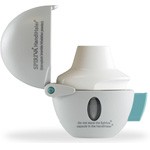Chronic Bronchitis: Understanding, Managing, and Treating a Persistent Respiratory Condition


Chronic bronchitis is a long-term inflammatory condition that affects the airways in the lungs, specifically the bronchi. It is one of the main forms of chronic obstructive pulmonary disease (COPD) and is characterized by persistent coughing, mucus production, and breathing difficulties. Unlike acute bronchitis, which usually develops suddenly and resolves within a few weeks, chronic bronchitis is a progressive illness that requires long-term management. This article provides a comprehensive look at the nature of chronic bronchitis, including its symptoms, treatment options, life expectancy considerations, and the therapeutic role of Tiotropium Bromide.
What Is Chronic Bronchitis?
Chronic bronchitis is defined clinically as a productive cough lasting for at least three months in two consecutive years in a person where other causes of chronic cough have been ruled out. It involves inflammation of the bronchial tubes, leading to excessive production of mucus and narrowing of the airways. The inflammation causes damage to the cilia — the tiny hair-like structures that normally help clear mucus and debris from the lungs — resulting in mucus buildup and frequent infections.
The condition often stems from long-term exposure to irritants that damage the lungs and airways. The most common cause is cigarette smoking, though chronic exposure to air pollution, dust, toxic gases, and other occupational hazards also contributes to its development. Genetics and a history of frequent respiratory infections in childhood may also increase susceptibility.
Can Chronic Bronchitis Be Cured?
Chronic bronchitis is a progressive disease, and at present, there is no definitive cure. However, it is a manageable condition, and with proper treatment and lifestyle modifications, many patients can lead stable, productive lives. The goal of treatment is to control symptoms, improve quality of life, and slow disease progression. Smoking cessation is the single most important intervention — it can significantly halt the deterioration of lung function and improve outcomes.
In early stages, chronic bronchitis may present with relatively mild symptoms that can be controlled effectively. In more advanced stages, complications such as frequent exacerbations, lung infections, and even respiratory failure may occur. While the disease itself cannot be reversed, its impact can be reduced with comprehensive care.
What Are 5 Symptoms of Bronchitis?
Chronic bronchitis manifests through several hallmark symptoms, many of which overlap with other forms of respiratory disease. The five most common and defining symptoms include:
- Persistent productive cough – The cough produces mucus (sputum), often white, yellow, or green in color. It tends to worsen in the morning and during cold weather.
- Shortness of breath – Especially during physical activity, as airway obstruction and mucus limit airflow.
- Chest discomfort or tightness – Often due to coughing and inflammation in the chest region.
- Wheezing – A whistling sound during breathing, typically caused by narrowed or blocked airways.
- Fatigue – Resulting from the constant effort to breathe and frequent sleep disturbances caused by nighttime coughing.
These symptoms tend to worsen over time if not managed properly. During flare-ups, often called exacerbations, symptoms may intensify and require medical intervention.
Can You Live a Long Life with Bronchitis?
Yes, many people with chronic bronchitis — especially those who seek treatment early and make necessary lifestyle changes — can live a long and relatively normal life. Life expectancy in chronic bronchitis varies depending on several factors, including the severity of the disease, the presence of comorbid conditions (like heart disease or diabetes), whether the person continues to smoke, and how effectively the condition is managed.
For those who quit smoking and adhere to prescribed treatments, the progression of the disease can be significantly slowed. Patients with mild to moderate disease who are proactive about their health may live for decades with minimal impact on daily activities. However, in severe cases where lung function is heavily compromised, the disease can limit life expectancy if left unmanaged.
Regular follow-ups, vaccinations (such as flu and pneumococcal vaccines), and prompt treatment of respiratory infections play a critical role in extending life and maintaining lung function.
What Is the Initial Treatment for Chronic Bronchitis?
Initial treatment for chronic bronchitis focuses on symptom control, prevention of complications, and slowing disease progression. The foundational step is smoking cessation, as continued smoking accelerates lung damage. Patients who stop smoking often notice improved breathing and reduced coughing within weeks.
Pharmacologic treatments are introduced to relieve airway obstruction and reduce inflammation. These typically include:
- Bronchodilators, which help open the airways and make breathing easier.Short-acting bronchodilators may be used as needed, while long-acting bronchodilators are used for maintenance therapy.
- Inhaled corticosteroids, which may be added in patients with frequent exacerbations or features of asthma-COPD overlap.
- Mucolytic agents, to thin the mucus and make it easier to expel.
Pulmonary rehabilitation programs offer exercise training, nutritional counseling, and education, all aimed at improving respiratory health and overall well-being. Oxygen therapy may be needed for those with significantly reduced oxygen levels.
Additionally, patients are advised to stay physically active, eat a balanced diet, avoid respiratory irritants, and monitor for early signs of infection.
The Role of Tiotropium Bromide in the Treatment of Chronic Bronchitis
Tiotropium Bromide is a long-acting anticholinergic bronchodilator that plays a pivotal role in the management of chronic bronchitis, particularly in patients with moderate to severe COPD. It is typically administered via inhalation and works by blocking the muscarinic receptors in the airways, leading to prolonged bronchodilation.
Unlike short-acting bronchodilators that provide temporary relief, tiotropium offers 24-hour airway relaxation, reducing the frequency and severity of symptoms such as shortness of breath and wheezing. It also helps decrease the rate of exacerbations and hospitalizations, making it a valuable maintenance therapy for patients with chronic bronchitis.
Clinical trials have demonstrated that regular use of tiotropium improves lung function, enhances exercise tolerance, and contributes to better health-related quality of life. It is generally well-tolerated, though some patients may experience dry mouth or other mild side effects.
Tiotropium is particularly effective when combined with other long-acting bronchodilators (such as beta-agonists) or inhaled corticosteroids in a triple therapy regimen for those with more advanced disease. Its once-daily dosing also makes it convenient and promotes better adherence to treatment.
Conclusion
Chronic bronchitis is a lifelong condition that poses significant challenges to respiratory health, but it is by no means untreatable. Through early diagnosis, lifestyle changes, appropriate medications, and ongoing monitoring, most individuals with chronic bronchitis can maintain an active and fulfilling life. The key lies in controlling symptoms, preventing exacerbations, and minimizing further lung damage.
Understanding the role of medications such as Tiotropium Bromide is crucial in managing the condition effectively. As one of the cornerstone treatments for chronic bronchitis within COPD, it provides lasting relief and helps reduce the burden of daily symptoms. With a combination of medical therapy, patient education, and support, chronic bronchitis can be successfully managed — even if it cannot be completely cured.
Medically Reviewed by Dr. Faride Ramos, MD
(Updated at May 28 / 2025)

